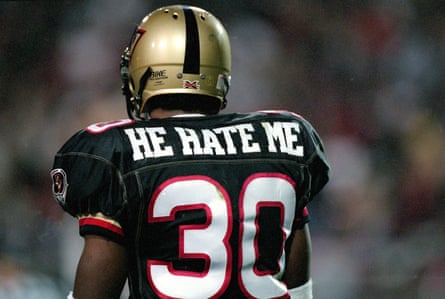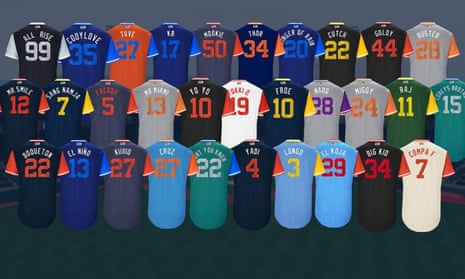Baseball has a problem. Apparently it is no longer interesting to young people. More specifically, it appeals more to those beyond a serviceable demographic deemed exciting to advertisers. According to data complied by three media organizations the average age of those who watch baseball games is 57 and that number is rapidly moving into early-bird buffet territory. The same study showed only 7% of those watching baseball are under 18.
This is undoubtedly why Major League Baseball soon will dress their teams for three games in jerseys that look like soccer tops with each player’s nickname on the back. In a reach to come off as young, baseball has gone the route of Brazilian football or every color-coordinated Sunday softball team with a portable beer cooler. It may also lead to some awkward pairings on the field say with Yankees third baseman Todd ‘Toddfather’ Frazier and teammate Aaron ‘All Rise’ Judge.
Somehow it’s hard to imagine Pirates star Andrew McCutchen any less cool running down a liner in the gap than his alter ego ‘Cutch.’
When I first read about baseball’s nickname jerseys – officially called Players Weekend, all I could think about was a football running back from the early 2000s named Rod Smart.
Back in 2001, pro wrestling czar Vince McMahon and NBC executive Dick Ebersol bet the NFL was growing stale to younger fans. They created the XFL, a league that would celebrate all the violence of the NFL while eliminating fussy restrictions that banned touchdown dances and governed the height of a player’s socks. Among the many things the XFL did to be the fun antidote to the NFL was to encourage players to put nicknames on the back of their jerseys. This is where Smart came in.
At the time he was an unknown running back from Western Kentucky with a career going nowhere. But when he joined the XFL’s Las Vegas Outlaws he told a team equipment man he wished to not wear ‘Smart’ on the back of his jersey but instead the words ‘He Hate Me.’
I ran into Smart before the league’s first game. He was coming out of the Las Vegas locker room and when he turned his back slightly to move past a teammate I could clearly see the words ‘He Hate Me’ on his back. As one of the league’s other rules was to allow all access to journalists before games, I followed him down the sideline and asked him about the name.
“That’s because when I run past the other guy, he hate me,” Smart said. Then he laughed.

Smart turned out to be a genius. After the XFL’s first game He Hate Me was the thing everyone wanted to talk about. People were shocked. Football players didn’t do such things. In a league that was quickly forgettable, He Hate Me became an enduring footnote. Back in 2004 his agent Steve Forest told me the nickname helped Smart to be seen by NFL executives, eventually getting him to the Philadelphia Eagles, Carolina Panthers and Oakland Raiders in a brief NFL career he otherwise wouldn’t have expected.
“Those scouts and general mangers have so many players to remember it’s easy to lose one,” Forest said. “But when someone says ‘Rod Smart’ and someone goes ‘Who’s that?’ and someone else says ‘You know, He Hate Me,’ well, everyone remembers that.”
Here’s the thing, though, He Hate Me was never meant to be transformative. When I talked to him in 2004 Smart said he intended to have a different nickname on the back of his jersey each week, changing his mind only after He Hate Me caught on right away. The name was a disposable joke, meant to be cast away, much like the XFL became a joke, folding several months and many empty stadiums later. And while the NFL did adopt a few of the XFL’s more interesting ventures like the overhead camera, the XFL was neither appealing to younger viewers nor cooler than the existing league.
The same is true with baseball. It might not be the American giant it was two generations past, but it still draws millions of fans to its ballparks and remains hugely popular in places like Japan, Korea and much of the Caribbean. Baseball’s biggest problem is that its games take too long, burdened by endless pitching changes, batters taking too many pitches, constant coach visits to the mound and replay reviews that drag on and on. Last month, a game was delayed for 18 minutes while umpires tried to sort out a bungled double switch.
Baseball’s issues are structural and therefore not easy to confront. A cosmetic fix by having the players wear shirts that look like soccer jerseys with nicknames like ‘Mr Smile’ or ‘Dave Human’ won’t move those people under 18 who aren’t watching baseball. If baseball wants to be fixed it needs to do something about the three-and-a-half hour drag where almost nothing happens.
Leave the nicknames to Dodgers shortstop Corey Seager.
The name he will wear on the back of his jersey during nickname weekend?
‘Seager.’

Comments (…)
Sign in or create your Guardian account to join the discussion